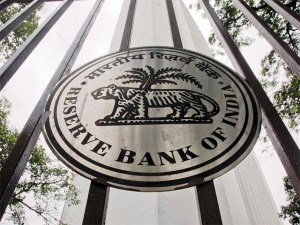The Reserve Bank of India (RBI) issued clarifications on hedging of currency for external commercial borrowings (ECBs) in a notification on its website.
About ECB,
An external commercial borrowing (ECB) is an instrument used in India to facilitate the access to foreign money by Indian corporations and PSUs (public sector undertakings).
- ECBs include commercial bank loans, buyers’ credit, suppliers’ credit, securitised instruments such as floating rate notes and fixed rate bonds etc., credit from official export credit agencies and commercial borrowings from the private sector window of multilateral financial Institutions such as International Finance Corporation (Washington), ADB, AFIC, CDC, etc.
- ECBs cannot be used for investment instock market or speculation in real estate.
- The DEA (Department of Economic Affairs), Ministry of Finance,Government of Indiaalong with Reserve Bank of India, monitors and regulates ECB guidelines and policies. For infrastructure and greenfield projects, funding up to 50% (through ECB) is allowed. In telecom sector too, up to 50% funding through ECBs is allowed.
- Recently Government of India allowed borrowings in Chinese currency yuan.Corporate sectors can mobilize USD 750 million via automatic route, whereas service sectors and NGO’s for microfinance can mobilize USD 200 million and 10 million respectively.
- Borrowers can use 25 per cent of the ECB to repay rupee debt and the remaining 75 per cent should be used for new projects.
- A borrower cannot refinance its entire existing rupee loan through ECB. The money raised through ECB is cheaper given near-zero interest rates in the US and Europe, Indian companies can repay part of their existing expensive loans from that.
About the Hedging to Currency,
The ECB borrower will be required to cover both principal as well as coupon payments through the hedges done, starting from the day of borrowing.
- The hedging period will be for the entire life of the liability with a minimum one-year rollover option, ensuring that the total exposure is not unhedged at any point of time.
- The borrower has to hedge in such a manner that the projected cash flows match the expectation of the borrowers irrespective of the fluctuations in the foreign currency.

- With a view to provide clarity on the aforesaid directions and bring uniformity in hedging practices in the market so as to effectively address currency risk at a systemic level, the following clarifications are issued:
- Coverage:Wherever hedging has been mandated by the RBI, the ECB borrower will be required to cover principal as well as coupon through financial hedges. The financial hedge for all exposures on account of ECB should start from the time of each such exposure (i.e. the day liability is created in the books of the borrower).
- Tenor and rollover:A minimum tenor of one year of financial hedge would be required with periodic rollover duly ensuring that the exposure on account of ECB is not unhedged at any point during the currency of ECB.
- Natural Hedge:Natural hedge, in lieu of financial hedge, will be considered only to the extent of offsetting projected cash flows / revenues in matching currency, net of all other projected outflows. For this purpose, an ECB may be considered naturally hedged if the offsetting exposure has the maturity/cash flow within the same accounting year. Any other arrangements/ structures, where revenues are indexed to foreign currency will not be considered as natural hedge.
- The designated AD Category-I bank will have the responsibility of verifying that 100 per cent hedging requirement is complied with. All other aspects of the ECB policy shall remain unchanged.
- AD Category-I banks may bring the contents of this circular to the notice of their constituents and customers.
- The designated banks will have the responsibility of verifying that 100% hedging requirement is complied with.
AffairsCloud Recommends Oliveboard Mock Test
AffairsCloud Ebook - Support Us to Grow
Govt Jobs by Category
Bank Jobs Notification






